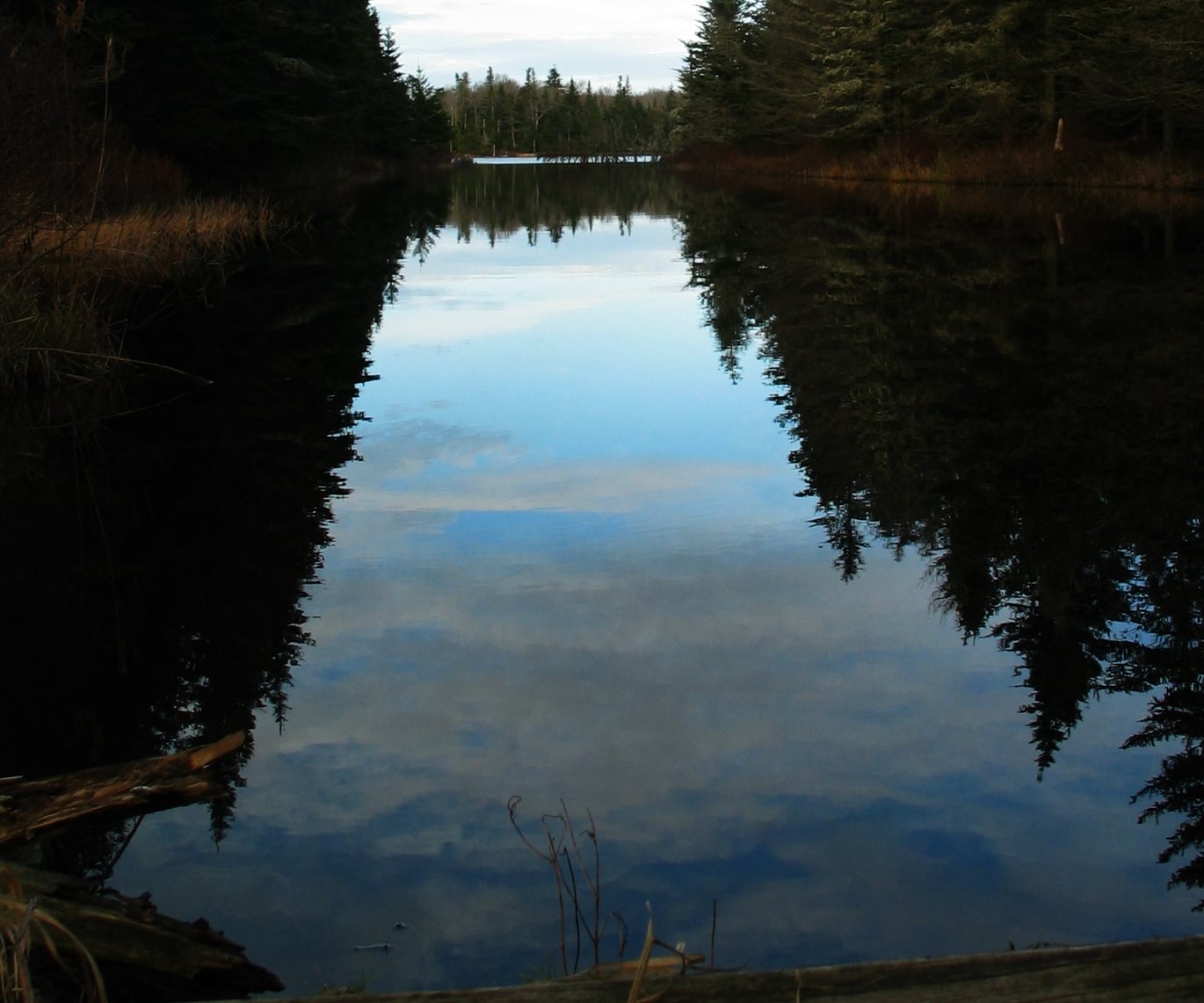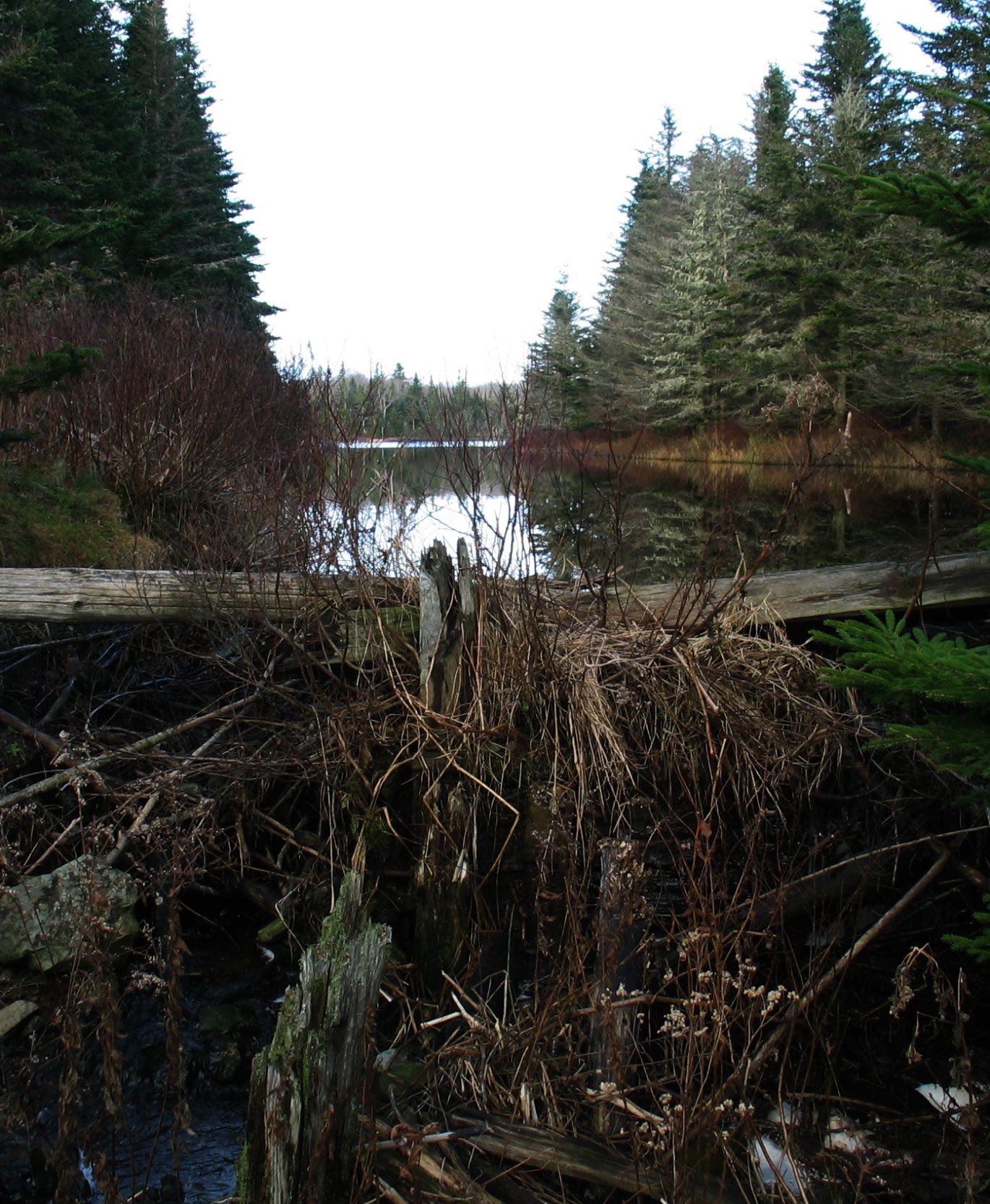Bantjes, Rod, “Vincents_Lake.html,” in Eigg Mountain Settlement History, last modified, 14 August 2015 (http://people.stfx.ca/rbantjes/gis/txt/eigg/introduction.html).
Vincent’s Lake (Eigg Mountain Settlement History) (Map Location)
The lake has been known by different names. On the Church Map 1879 it is listed as Doctor’s Brook Lake [which makes little sense since it does not drain into Doctor’s Brook]. It has also been known as MacIsaac’s Lake and Rory’s Lake (since 1880, after Rory MacIsaac). On the 1993 Geological Survey Map it is listed as Knoydart Lake. When the lake was dammed and diverted into the Wrights River catchment basin in the 1960s, it was renamed Vincent’s Lake after the then mayor of Antigonish. Click to see some views from the north end of the Lake.
Diversion put the lake in a different watershed. It originally drained to the east into Rory’ Lake Brook, which flows into McAras Brook which empties north into the Northumberland Strait. It now empties south through a channel that Charlie calls the “moat” into Mooney’s Brook, then into the Rights River and eventually out to Antigonish Harbor. The idea was to augment the town’s water supply. Construction of the moat involved building a dike to prevent water from draining to the east (and perhaps to raise the water level?) and digging a long channel to divert water to the south. At the upper end of the channel there was a sluice gate which is now decayed and eroded. When it finally breaks through the level of the lake will drop about four feet. (The break eventually occurred ten years after this was written [i.e. 2015].)
Below is a photo of the upper channel looking northeast (December 1, 2005).

Below is a photo of the same channel showing the remains of the sluice gate (December 1, 2005).

Charlie and Kenton tell another story of Mayor Vincent MacDonald’s inventiveness. In 1960 “he brought up a bunch of goats” to a lumber camp and built a barn for them with the idea of proving that they could survive the winter on their own. “He did put a pile of hay in the barn in the fall,” but nobody came up to tend the animals. “The goats all died except maybe one.” They weren’t killed by coyotes since there were no coyotes in the area at that time. A “common belief” was that “the pulp mills secretly introduced them to reduce the rabbit population, which were hard on the seedlings and tree plantations …However, there is no proof.”
Source: Kenton and Charlie Teasdale, Interview, Eigg Mountain, October 16, 2004.